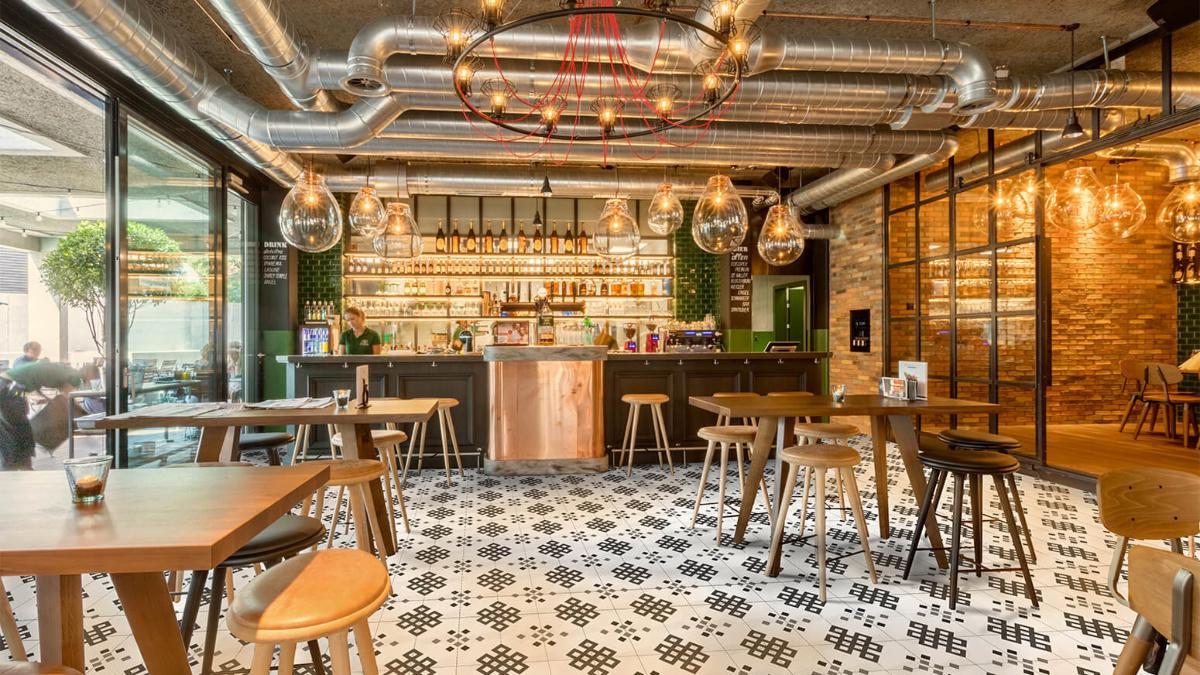

Indian startup Carbon Craft Design upcycles black carbon into stylish tiles. Carbon Craft Design
Indian startup Carbon Craft Design (CCD) launched with the goal of making construction more sustainable and tackling India’s major air pollution problem. It does so by extracting black carbon from polluted air and upcycling it into strong and stylish carbon tiles.
Black carbon is a substance in fine particulate matter (PM2.5) air pollution that absorbs one million times more energy from the sun than carbon dioxide, making it a potent contributor to the climate crisis, CNN reported.
Black carbon also has dangerous health effects, having been linked to lung and heart disease in addition to impairing cognitive and immune functions, the article stated. Earlier this year, two separate studies found that air pollution shortens human life expectancy by three years and that there is “no safe level” of air pollution exposure, because even low levels of PM2.5 correlated with an increased risk of cardiac arrest. In 2020, air pollution was responsible for over 6.6 million deaths worldwide and was ruled, for the first time, as a partial cause of the asthma death of a nine-year-old London girl.
India is notorious for its polluted air. According to IQ Air, its cities often suffer from high levels of PM2.5, and 21 of the world’s 30 most polluted cities in 2019 were in the South Asian nation.
Building and construction are partly to blame. Traditional clay bricks are made by firing and heating them to roughly 2,000 degrees Fahrenheit, which takes a lot of energy and produces air pollution byproduct waste. India is the world’s second-largest brick producer, and brick kilns account for 20 percent of black carbon emissions globally, CNN reported. Conventional vitrified tiles (a low-porosity ceramic), also require a lot of energy to manufacture since they have to be burned, The Better India reported.
Architect Tejas Sidnal was shocked to discover how construction exacerbates his nation’s environmental issues. In response, Sidnal founded CCD in 2019, and his new carbon tiles are reinventing how to build.
“That was a crazy eye opener,” he told CNN. “As architects, we are responsible for so much air pollution. We can do better.”
CCD Project Head Giriprashad K explained in a company video about carbon tiles, “The present-day production of construction materials is one of the largest single-source contributors of climate change. We wanted to see how to use this captured carbon [to produce] building materials. We came up with this idea that this carbon can be converted into this tile, and it is scalable.”
CCD collaborated with Boston-based Graviky Labs to use pollution as a resource and create their signature product. Graviky captures and converts carbon soot from cars and factories into sustainable products, and uses a similar process to upcycle purified carbon into a powder pigment. CCD mixes this carbon pigment with cement and marble waste from quarries to produce handcrafted, monochromatic tiles, CNN reported.
The “craft” in the company name derives from the fact that the cement tiles are handmade by craftsmen using traditional, lower-carbon processes that have been used in India for more than 200 years, the video explained. Carbon tiles are made using a hydraulic press instead of being burned, requiring one-fifth of the energy to produce compared to vitrified tiles, The Better India reported. Carbon tiles come in six shades with 15 different designs, and can even be customized.
“By making carbon tile, we help [the craftsmen] thrive and empower the local community,” Sidal said in the video.
Each new sustainable building tile contains at least 70 percent waste material and is the equivalent of cleaning 30,000 liters of air, the company website said. By CCD’s math, “1 Carbon Tile = 1 Day of Clean Air” for a person. And while many companies are developing commercially viable ways to capture carbon dioxide emissions, few are focused on black carbon, Sidnal told CNN.
“We found a way to add value to this recovered carbon by using it as a pigment in carbon tiles,” he said.
The tiles are also stronger than conventional cement tiles due to the higher carbon content, and Sidal and CCD’s customers hope that recapturing pollutants like black carbon will slow the climate crisis and improve air quality, CNN reported.
“Anything that we build should be able to be reused or upcycled in some form or the other. That is why we feel that any resource is not a waste. And now we feel that air pollution is just a resource that is not harvested,” Sidnal said in the CCD video.
Sidnal’s ultimate vision is to construct a “carbon-conscious building” with each component derived from processing air pollutants, he told The Better India.

 233k
233k  41k
41k  Subscribe
Subscribe 